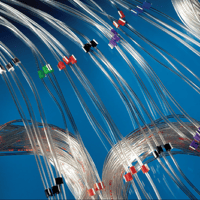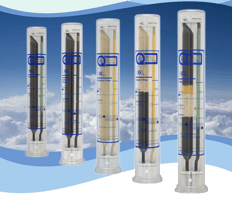Peristaltic pumps (also known as a roller pump) work using a process known as peristalsis, which...
The Importance of Dissolution Cannula Filters
Title: The Importance of Dissolution Cannula Filters: Enhancing Accuracy and Efficiency
Today, we're diving into the world of dissolution testing. Now, you might be thinking, "What on earth is dissolution testing?" Well, my friends, it's a critical process in the pharmaceutical industry that helps determine how quickly a drug dissolves in the body. And in this blog post, we're going to shine a spotlight on one crucial component of this testing method – the dissolution cannula filter. So, get ready to uncover the importance of this tiny yet mighty device!
What is a Dissolution Cannula Filter?
First things first, let's clear the fog around what a dissolution cannula filter actually is. Picture this: you have a dissolution testing apparatus, and it consists of a vessel filled with a dissolution medium and a rotating paddle that mimics the movement of your digestive tract. The dissolution cannula filter fits on the end of the sampling cannula, with a series of tiny pores, connects the vessel to an external collection system. Its primary function is to allow the dissolved drug to pass through while preventing unwanted particles from contaminating the sample.

The Role of Dissolution Cannula Filters:
1. Ensuring accurate and reliable results:
Without a doubt, accuracy is key when it comes to dissolution testing. The dissolution cannula filter acts as the first line of defense, preventing any unwanted debris or particulate matter from interfering with the sample. By keeping the sample clean and pure, the filter ensures that the results obtained are precise and reliable.
2. Increasing efficiency and reducing downtime:
In the fast-paced world of pharmaceutical research and development, time is of the essence. A clogged cannula filter can significantly impact the efficiency of dissolution testing by slowing down the flow rate or even causing complete blockage. By incorporating dissolution cannula filters with appropriate pore sizes, researchers can optimize the filtration process, resulting in increased productivity and reduced downtime.
3. Minimizing cross-contamination risks:
Imagine if a tiny particle from one sample found its way into another, completely different sample. Sounds like a recipe for disaster, right? Well, that's where dissolution cannula filters step in. These filters act as a barrier, preventing any accidental mixing of samples and reducing the risk of cross-contamination. This ensures the integrity of data and preserves the validity of test results.
Conclusion:
While the dissolution cannula filter may seem insignificant compared to the complex world of pharmaceutical research, its role cannot be overstated. By diligently filtering out unwanted particles, these tiny devices pave the way for accurate and reliable results in dissolution testing. With increased efficiency and reduced downtime, they contribute to the smooth progression of drug development processes. So, let's tip our hats to the unsung heroes of the scientific world – the dissolution cannula filters!
Remember, dear readers, knowledge is power, and understanding the importance of even the smallest components can make a significant impact on the progress of scientific endeavors. Stay curious, stay passionate, and keep exploring the fascinating realm of pharmaceutical research!
Buy Now
£59/Per 100
Key features
-
Prevent contaminates from entering dissolution samples
-
Made from Ultra High Molecular Weight (UHMW) Polyethylene
-
Available in 10, 20 and 35µm pore sizes




